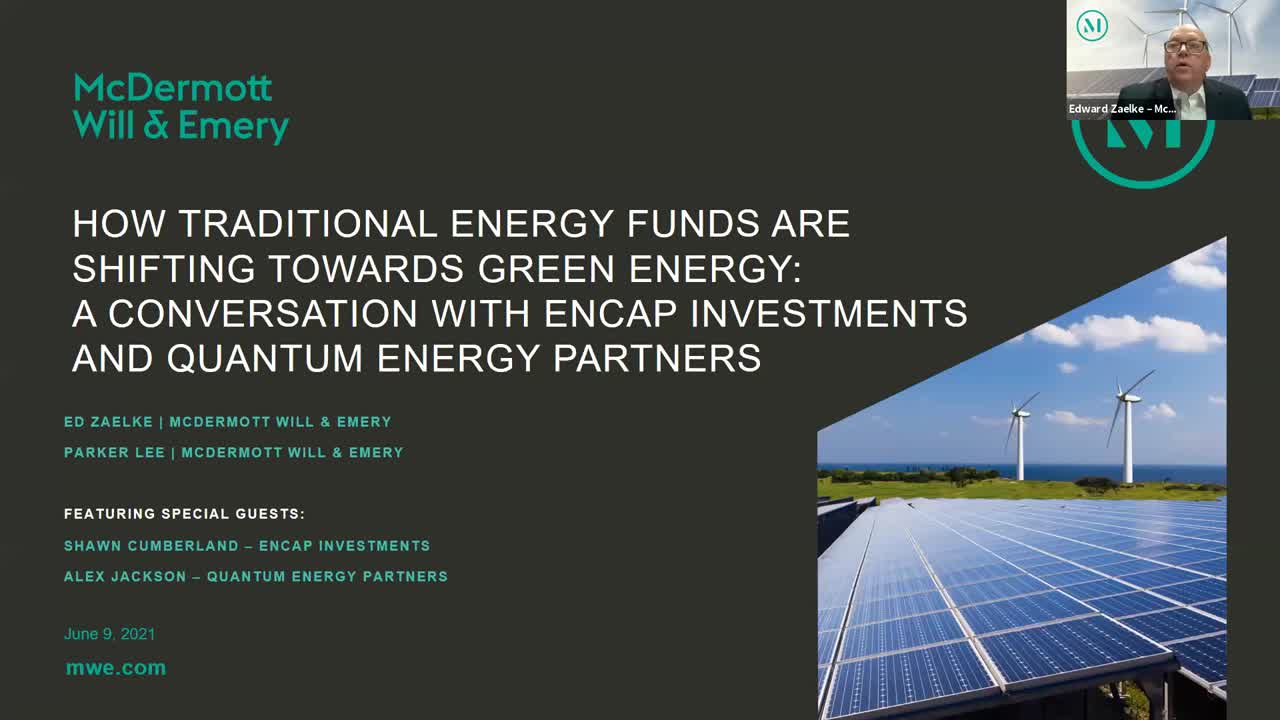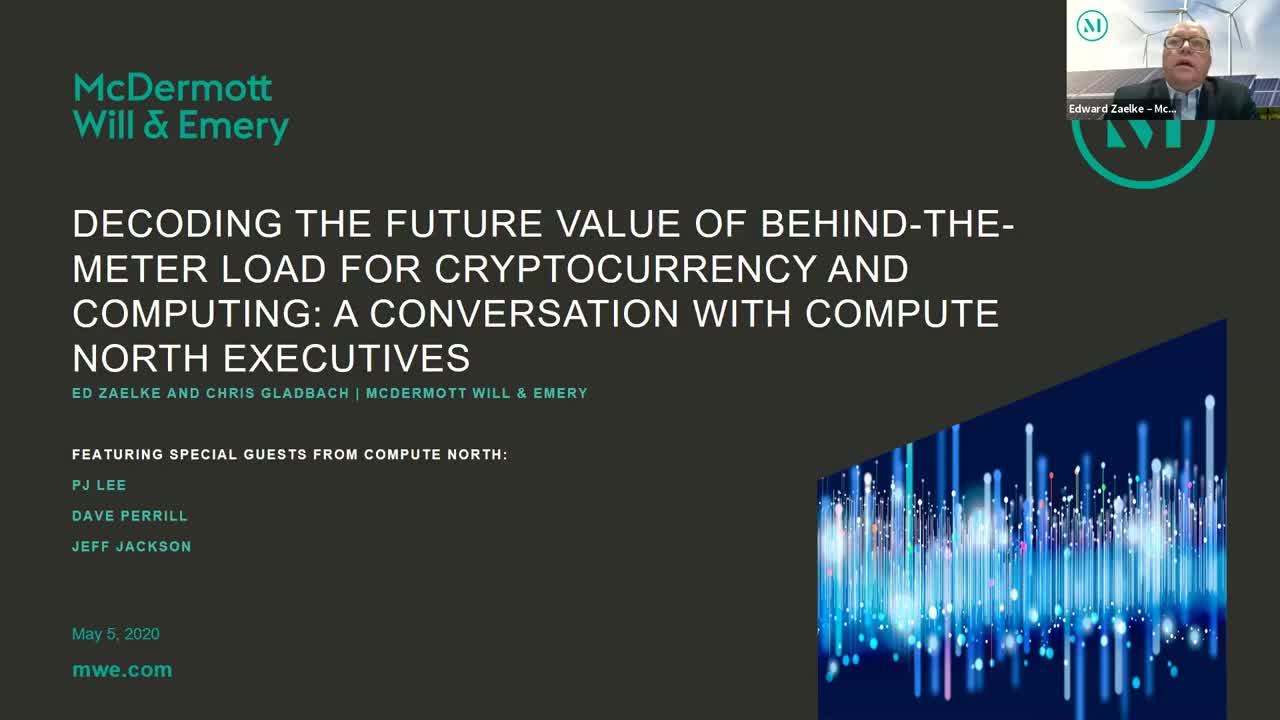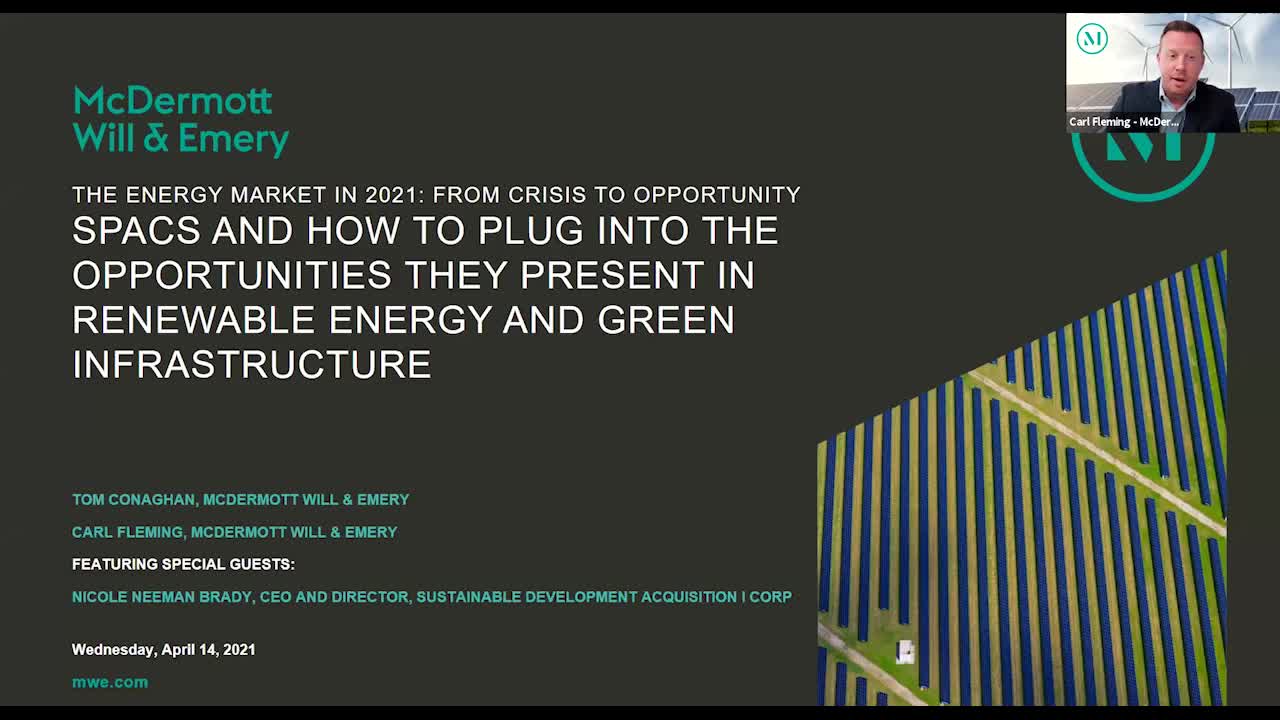The energy market has undergone significant change in the past 12 months, with even more on the horizon. Our webinar series explores how these changes have shaped—and will continue to impact—the energy industry, including discussions of what’s to come.
Our latest webinar featured McDermott partners Edward Zaelke and Parker Lee, as well as Shawn Cumberland, Managing Partner of Energy Transition of EnCap Investments, and Alex Jackson, Director at Quantum Energy Partners.

Below are key takeaways from the webinar:
1. Although energy transition investment funds may have different focuses, they generally take an all-of-the-above approach, with respect to investing, in the various subsectors of the energy transition and are willing to invest in any technology, in any portion of the energy industry (except for highly capital intensive projects with binary risk profiles).
2. Similar to the approach for conventional oil and gas investments, investment funds are focused on investing in strong management teams with a successful track record, which is manifested either through a management team that already has an interesting business plan or a management team that can successfully implement the investment fund’s strategy for a new business.
3. Environmental, social and corporate governance (ESG) policies have become pervasive in all industries—especially within the energy industry—and must permeate all aspects of an investment fund’s strategy. Effective ESG policies and proper environmental stewardship have become licenses to operate within the energy industry and without them, operating companies and investment funds will have extremely limited ability to gain legitimate interest from potential investment partners.
4. When developing a relationship between an investment fund and a management team for a new investment, it is critical for both parties to ensure there are aligned interests and expectations between the two parties.
5. Investment funds see abundant opportunities within the energy transitions space and are bullish on those investments’ capability to satisfy energy demand over the next two to three decades but are also looking to achieve diversification to protect their limited partners from the cyclical nature of energy investment.
To access past webinars in this series and to begin receiving Energy updates, including invitations to the webinar series, please click here.
read more

 Subscribe
Subscribe



